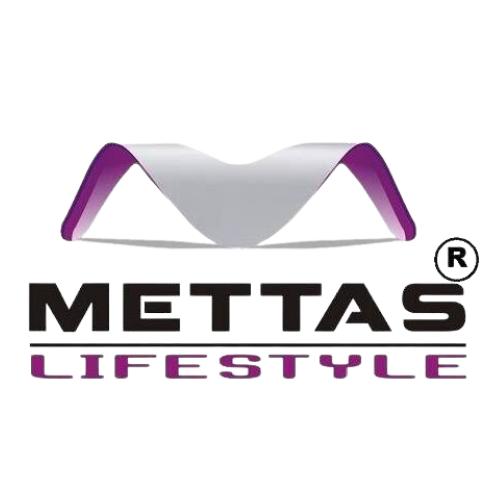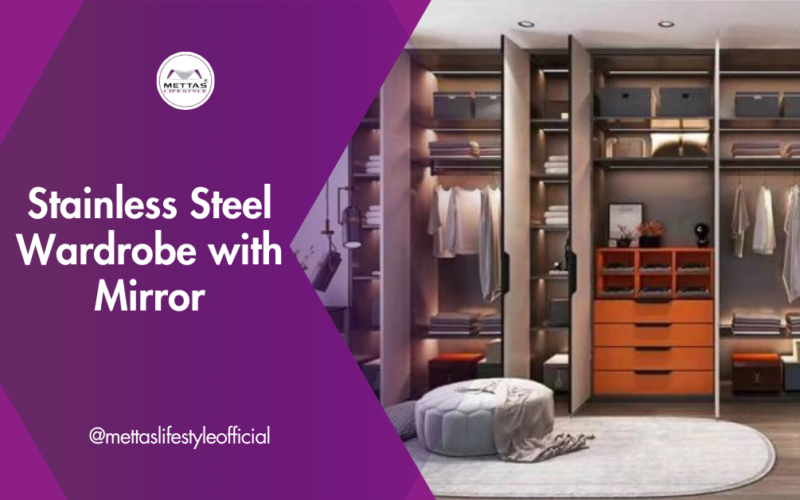

Table of Contents
ToggleIntroduction
When it comes to choosing the material for your customized wardrobe, the decision holds the key to its longevity and visual appeal, according to Mettas Lifestyle. In this blog, we aim to unravel the common questions that often arise when contemplating wardrobe materials. Our goal is to guide you through the factors that influence your choice, ensuring that you’re equipped with the knowledge to make an informed decision.
Exploring Wardrobe Materials
The choice of wardrobe material significantly impacts the wardrobe’s aesthetics, durability, and cost. Understanding the nuances of different materials helps you make an informed decision that aligns with your preferences and lifestyle.

The Quest for the Perfect Wardrobe Material
As you embark on the journey to find the best wardrobe material, several questions come to mind:
Which materials are suitable for wardrobes?
Why do material costs vary?
How does the choice of material affect the overall cost?
What are the characteristics of different wardrobe materials?
The Finest Selections
To assist you in your quest for the ideal wardrobe material, here’s a list of options to consider:
1. Plywood

Plywood, known for its balance of durability and functionality, comes in various types, including Architect Ply, BWP (Boiling Water Proof), BWR (Boiling Water Resistant), and MR (Moisture Resistant). While plywood offers reduced bending due to an odd number of plies, it may not match the durability of solid wood.
2. HDHMR/HDF

High-density fiberboard (HDF) offers a fine surface suitable for coatings like veneering, laminating, painting, and varnishing. On the other hand, the High-Density High Moisture Resistance (HDHMR) board, an upgraded version of plywood, excels in moisture-prone environments. Its multi-dimensional bond and robust construction make it suitable for kitchen shutters, outdoor fixtures, and more.
3. MDF (Medium Density Fibreboard)

MDF is a low-cost alternative to wood, presenting economic value and resistance to some insects. While it can be painted, stained, and cut with ease, it lacks the durability of natural wood. It serves as a cost-effective solution but may not withstand extreme stress or moisture.
4. Particle Board

Engineered from wood chips and synthetic resin, particle board offers affordability and is often mistaken for oriented strand board (OSB). Particle board, also known as chipboard, is suitable for lightweight applications but may lack the strength of other materials.
Making an Informed Choice
Each wardrobe material presents a unique set of advantages and disadvantages. Factors like budget, usage, and aesthetic preferences play a vital role in your decision-making process. While plywood offers versatility and stability, HDHMR excels in moisture resistance, and MDF serves as a budget-friendly option. Particle board, while economical, might not be the sturdiest choice.
Conclusion
Selecting the best wardrobe material requires careful consideration of your priorities. Durability, aesthetics, cost, and maintenance should all be factored in. A plywood wardrobe presents a timeless choice, HDF and HDHMR excel in specific environments, MDF offers versatility on a budget, and particle board provides an affordable alternative.
Ultimately, the perfect wardrobe material hinges on your unique requirements. By understanding the characteristics of each material, you can confidently choose a wardrobe that not only suits your needs but also complements your style.
In your pursuit of the ideal wardrobe, we invite you to explore our diverse range of materials, ensuring your customized wardrobe reflects your distinct taste and stands the test of time.
Related topics you must read: 10 Stainless Steel Wardrobe Accessories
Choosing the right wardrobe material is crucial, as it directly impacts the durability and style of your furniture. It ensures your investment lasts and complements your interior design.
The top materials known for durability include solid wood, MDF (medium density fiberboard), and metal. Each has its advantages in terms of longevity.
Solid wood is the go-to choice for a timeless, classic appearance. It offers a rich, elegant aesthetic that can stand the test of time.
Regular dusting and occasional polishing will help maintain the beauty of a wooden wardrobe. Avoid excessive moisture and direct sunlight exposure.
MDF is a budget-friendly option that provides a smooth surface for painting or veneering. It’s known for its resistance to cracking or warping.
Metal wardrobes are popular for their modern, industrial look and exceptional durability. They’re often chosen for contemporary designs.
Yes, you can mix and match materials to create a unique and eclectic wardrobe. For instance, combining wood and metal can result in a stylish fusion.
Consider the room’s purpose, style, and your personal preferences. For example, a children’s room may benefit from durable MDF, while a master bedroom could showcase elegant solid wood.
Yes, sustainable options like bamboo, reclaimed wood, and materials with low VOC (volatile organic compound) finishes are eco-friendly choices.
You can find a wide selection of wardrobes made from various materials at reputable furniture stores, both online and offline. Ensure to research and read reviews for the best options.





1 comment. Leave new
[…] If you enjoyed reading about these accessories that can optimize your wardrobe interiors, also explore: Choosing the Ideal Wardrobe Material […]